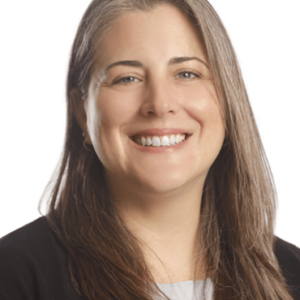How would you picture retirement if you could have your wish list? When would you want to retire? What kind of lifestyle do you envision? Where will you live? Do you hope to buy a second home or might you rent one? What activities will you pursue—travel, golf, volunteer work, enjoying grandchildren? Possibly you want to work part-time (maybe in your own business after you transition it to a successor) or start a new business as a second career. Interestingly, Baby Boomers start the most businesses in the U.S. According to the Kauffman Foundation (which promotes entrepreneurship), the fastest growing segment of entrepreneurs are adults over age 55 who are coming out of retirement or leaving corporate jobs to start businesses later in life. You wouldn’t be alone.
For many, retirement is too far away to be able to envision it. For others, it’s not that far off. For some, it is right around the corner, but feels like it’s ages away.
Much of what you envision requires some amount of financial resources to make it all happen. You may need more money early in retirement when you are healthiest and are free to kick up your heels, less in the middle phase as you become more settled, then more in the later phase as your medical needs rise (darn it!).
Once you have an overall idea of what you want, then you need to determine how much you need to have saved to reach those goals. We often are asked the seemingly simple question: “Am I saving enough for retirement?” Unfortunately, the question isn’t as simple as it appears. And it shouldn’t be. Not if you want an answer that is meaningful for your particular situation.
There are some rules of thumb saying you should save 10 percent of your income. Any savings is better than no savings, so at least that may be a start. For some, that might be just right. But what if you haven’t saved much and you’re 50. You may have some catching up to do compared to a 30-year-old who has been saving 10 percent and has many years for that money to compound. What you envision for retirement may require different savings rates than for someone else. High-income earners often underestimate what they need to save in order to sustain through retirement the lifestyle they have grown accustomed to.
Another rule of thumb is that you will only need 75 to 80 percent of your current income, and that may be the case for some. For most, that won’t be enough, especially if you live very conservatively now with the idea of living it up in retirement. It’s true that some expenses will go down in retirement, but others may go up by more than that—separate from any lifestyle changes.
Once retired, there are certain expenses that you will have to pay for on your own. Health care is most often the biggest one, especially if you retire before becoming eligible for Medicare. Even if you are eligible, there are a lot of out-of-pocket expenses you have to cover, such as Medicare Part B, D and supplemental premiums, prescription costs, vision and dental. And as we age, we tend to need more medications and procedures. Combine the need for more medications and care as we age with the higher inflation rate on health care costs, and you have a significant expense over your retirement years that you really can’t control.
There could be other expenses you are not used to paying for personally, especially if you are a business owner. These can include cell phone, auto-related expenses, etc., that you should add in for retirement living expenses. It would be wise to be conservative in your planning so you are not caught short.
How much is enough is all relative and it depends on many things. It is worth doing a retirement cash flow/wealth projection that pulls everything together … then you can see if you’re on track and what changes, if any, you need to make before it’s too late. The analysis should be based on current portfolio values of all your accounts, as well as current income and anticipated changes to income (i.e. raises, sale of a business, social security benefits, any pension income, IRA distributions, deferred compensation payments, etc.). You will need to know what your current living expenses are and how they might change in retirement. If you’re too young to envision much detail about what you want your retirement to be like, you can at least base projections on your current living expenses and out-of-pocket expenses you would incur on leaving employment (health care). This analysis should also factor in income taxes each year of the projection based on the aforementioned income, a conservative rate of return on your investments, inflation (don’t underestimate the impact of inflation over time), a higher inflation rate on health care, retirement plan contributions, anticipated lump-sum expenditures (i.e. weddings, home improvements, trips, etc.), college expenses, etc. There are other quick calculations you could do, but this type of analysis is more meaningful and thorough. The devil is in the details. You can better assess your finances.
From this, you will better understand your options, such as when you can afford to retire, what lifestyle you can afford now or in retirement, if you need to work part-time in retirement, what rate of return you need to target on your investments, etc. If you own a business, this will help you determine what you need from your business to meet your retirement objectives. It will provide you with the information you need to make better-informed decisions.
This retirement analysis is even helpful for designing your investment strategy. You can see if you can afford to be conservative or if you should be a bit more aggressive. You can see how long you need the money to last, how much you need to draw out of the accounts each year and starting when, how much you need to keep liquid, etc. Retirees who have a couple of years’ worth of living expenses in cash might better avoid withdrawing from their accounts when markets are down.
You can run a scenario to see what effect a long-term care need might have on your or your spouse’s finances, so you can either be prepared or take proper measures to protect yourselves.
You will also better understand how one area of your finances can impact another. For instance, if you choose to fully fund your children’s college education, you will be able to see the effect that might have on your retirement security. If you can’t fully fund both your college and retirement goals, this will help you prioritize competing goals. One thing to keep in mind is that there are no loans, grants or scholarships in retirement like there are for college. There are more options for funding college. However, if funding college is a high priority, you at least need to understand what the trade-offs are for retirement so you can plan accordingly. You might need to work longer or cut back on your lifestyle now or in retirement. If none of those options are acceptable, at least you will know in advance that you need to revisit your college goal before it’s too late.
It is wonderful if you can fully fund all of your goals. If you can’t, you have to balance enjoying life with saving for later. We never know if we’re going to make it to retirement or what our health will be. It can be a challenge to balance both perspectives. At the same time, you can make small changes that don’t seem like much, but that can mean something when added together over a year. Maybe you don’t stop out for that coffee each day, cut back on your cable channels that you’re not even using, don’t dine out for lunch or dinner as often, take advantage of energy savings tips, etc. Each of these things is small on their own, but they add up.
Take action now to secure your retirement. It’s never too early nor too late to do what you can. Don’t assume it will all work out fine.
Cindi Turoski is a managing member of Bonadio Wealth Advisors based out of our Albany, NY office.
This material has been prepared for general, informational purposes only and is not intended to provide, and should not be relied on for, tax, legal or accounting advice. Should you require any such advice, please contact us directly. The information contained herein does not create, and your review or use of the information does not constitute, an accountant-client relationship.




